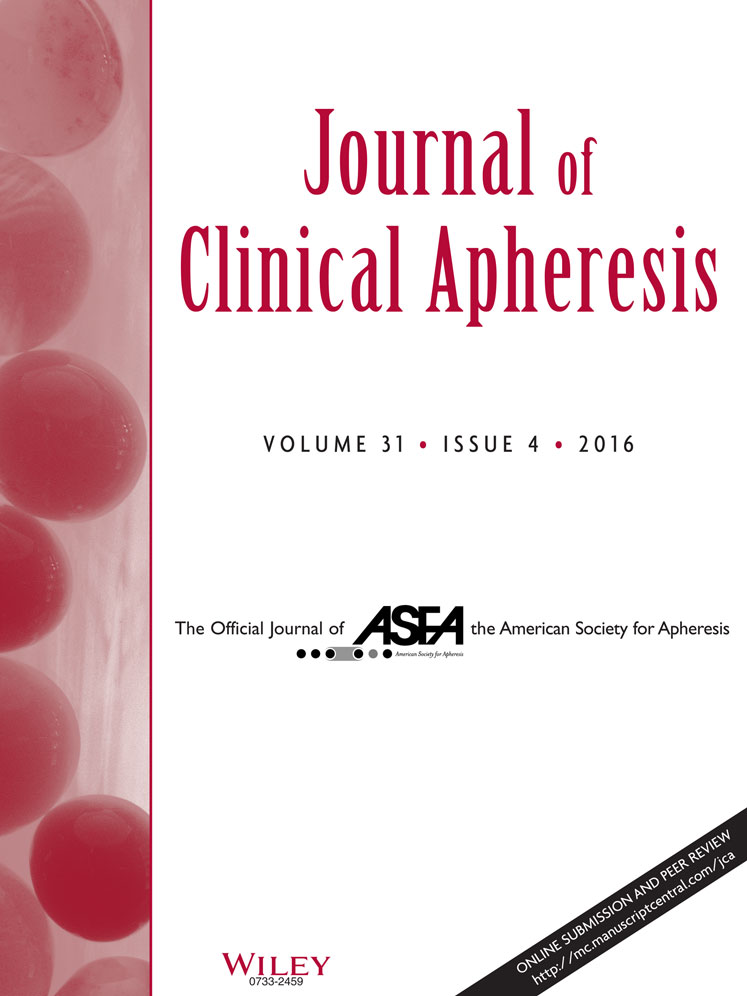Efficacy and safety of therapeutic plasma exchange by using apheresis devices in pediatric atypical hemolytic uremic syndrome patients
Abstract
Background:
Therapeutic plasma exchange (TPE) in atypical hemolytic uremic syndrome (aHUS) is considered as first line treatment as per current American Society for Apheresis (ASFA) guidelines. But there is very limited data available in the literature regarding efficacy and safety of TPE procedures in pediatric aHUS patients.
Aim:
To assess the safety and efficacy of TPE by using apheresis devices in pediatric aHUS patients.
Materials and Methods:
We did a retrospective analysis of all TPE procedures performed in aHUS pediatric patients over a period of 13 years (2001–2013). TPE procedures were done on two different devices daily or on alternate days depending on clinical condition of the patient. Adverse events if any were noted and analyzed. Pre and post procedural laboratory profiles were analyzed to assess the response to TPE therapy and patients were categorized accordingly.
Results:
A total of 169 TPE procedures (range of 1–22/patient with an average of 7.6 procedures/patient) were performed on 30 pediatric patients. Twenty four patients had more than 3 TPE procedures. Sixteen patients were complete responders, 5 were partial responders and 3 were non responders. The time between onset of illness and start of TPE therapy was 1–4 days in complete responders, 5–7 days in partial responders and 8–9 days in non- responders. Adverse events were observed in 13 (7.7%) procedures.
Conclusion:
TPE is a safe and effective therapeutic modality in pediatric aHUS if instituted early in the course of disease with a minimum of four to five procedures. J. Clin. Apheresis 31:381–387, 2016. © 2015 Wiley Periodicals, Inc.




